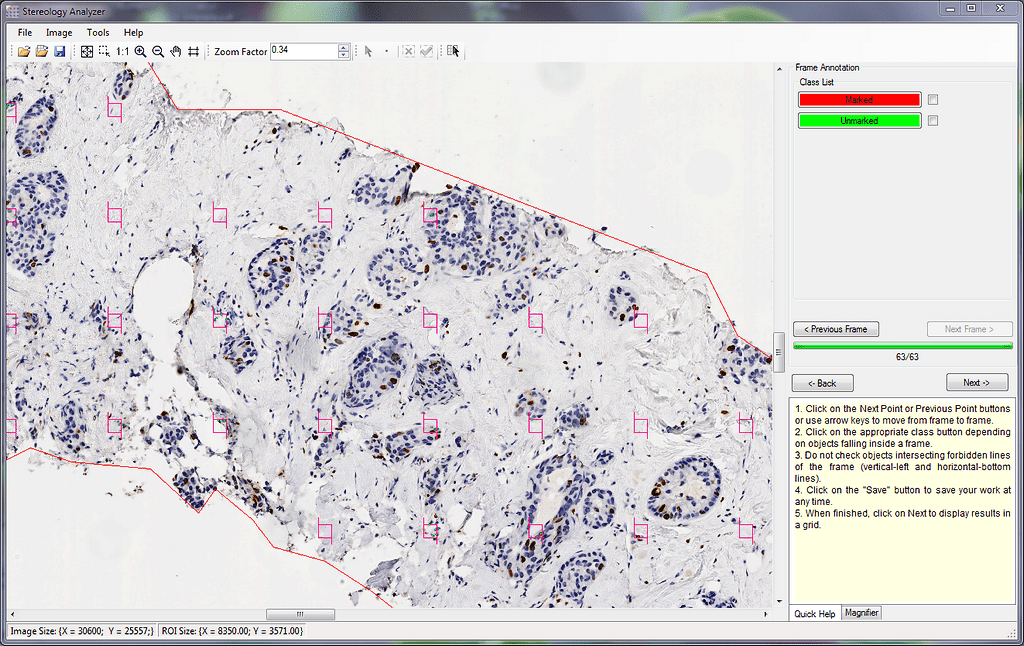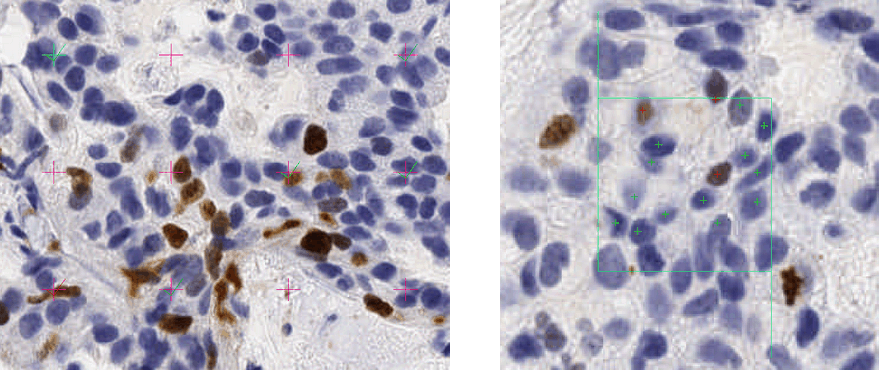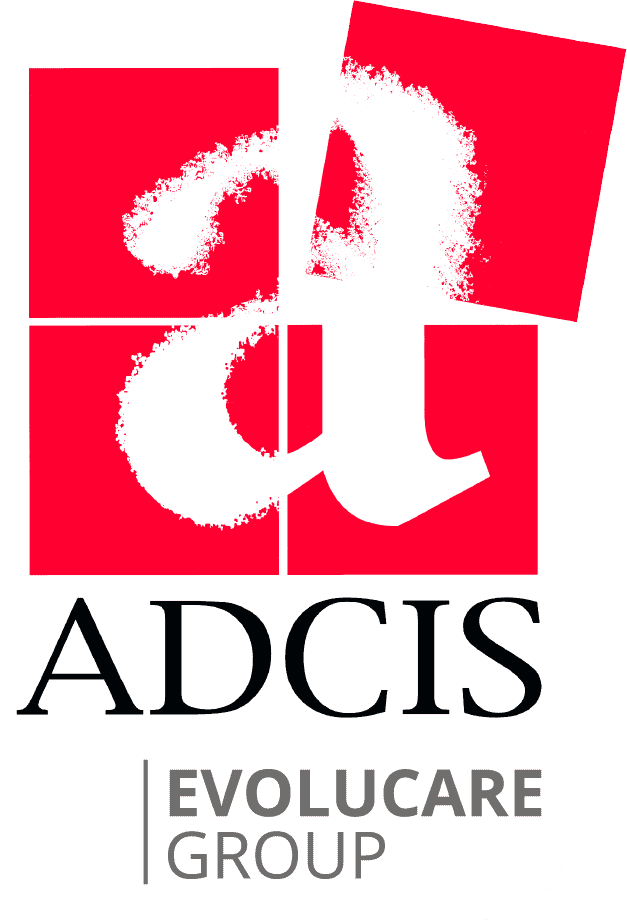Stereological analysis of 3D structures using 2D section or projection images
Stereology Analyzer is a simple to use software tool for reliably estimating quantifications of important 3D structures. This tool is general in its implementation, but has applicability to various scientific domains, most commonly in medicine, materials science, and geology.
The common factors in these fields are the need to characterize and quantify microscopic structures of interest (“SOI”) and the use of very large images (i.e., virtual slides or composite images).
Where automated processes don’t exist or fail to compute SOI parameters reliably, stereology is the method of choice to estimate these parameters. In fact, stereology is also frequently used to validate the proper performance of complex, automated algorithms. Stereology Analyzer is a faithful implementation of long-accepted stereological and statistical methods in the context of today’s software technology.
- ScienceStructures Of Interest
- MedicineTumor, vessels, cell, hotspot, etc.
- MaterialsGrain, inclusion, boundary, pore, etc.
- GeologyPore, phase, etc.

Stereology Analyzer graphical user interface
Stereology Background
The term stereology was first introduced in 1961 when the International Society for Stereology (ISS) was founded by a small group of scientists, although the basis of stereology theory was defined more than 300 years ago. By definition, stereology is the science that studies the geometric relationship between a structure that exists in 3D space and a set of images of the same structure that are fundamentally defined in 2D space (images of slices, sections, or projections). Note that standard 2D image processing techniques will hardly provide 3D information from sections, except for the volume fraction value.
Stereology Analyzer Presentation
Stereology Analyzer implements long-standing and accepted stereology techniques that employ an interactive grid overlaid on regions of interest (“ROI”) in a 2D image. Stereology Analyzer enables the user to optionally define one or more ROIs and a grid that overlays the ROIs or the whole image. The type and spacing of the grid can be adjusted by the user to achieve the best estimates of the SOI parameters contained within the ROIs. The types of grids are characterized by the geometric element that displays at the grid’s nodes. Grid element alternatives include points, lines, frames, squares, and circles.
After the grid and ROIs are defined, the user manually highlights SOIs that are intersected by the grid elements. The number of grid elements contained within the ROIs and the number of highlighted SOIs are then automatically counted and used to compute SOI parameters. The automatic computations are based on classical stereological and statistical analyses. These computational results are then displayed on the computer’s screen and can be exported into third party environments (e.g., Excel, Word) for display and further analysis specific to the applicable field.

Counting methods: Points vs Boxes
Image Processing Algorithm Validation
Experts in the applicable field can use Stereology Analyzer to quickly compute unbiased estimates of SOI parameters on virtual slides. If used properly, Stereology Analyzer is an effective alternative for image processing developers to validate a sequence of complex image processing algorithms. In addition, while complex algorithms require careful validation of their results, stereology results require no validation since results are derived from a standard statistical analysis of grid elements and user-highlighted SOIs.
In the field of medicine, when the SOIs cannot be highlighted by a specific staining (e.g., histochemical or immunohistochemical stainings), or when staining is not optimal or tissue is heterogeneous, then the techniques of stereology are the best alternative for estimating the parameter values of SOIs.
When specific staining is effective, different image processing and analysis algorithms can be developed that vary in their complexity, accuracy, and efficiency. Stereology Analyzer is a powerful tool for establishing the quantification accuracy that an algorithm sequence should achieve to be relied on. The statistical sampling process used in stereology science diminishes the difficult problem resulting from tissue heterogeneity. The special strength of stereology is that it always provides unbiased estimates of SOI parameters for any complexity of sample tissue. When combining stereology and image processing in pathology and scanning microscopy fields, the user has a broad set of powerful tools to characterize SOIs on virtual slides.
Capabilities
The Stereology Analyzer has the following capabilities:
- Grid: Uniform and user definable in density and type. Types include points, frames, squares, circles, and lines
- Region of interest: User definable, multiple regions allowed, can be any shape (e.g., ellipse, rectangle, and free-hand drawing)
- Undesired tissue: User can exclude undesired tissue and other undesired area regions
- Input: Input image formats are TIFF, tiled TIFF, and JPEG
- Output: Volume fraction, numeric density of SOI profiles per unit area
- Keyboard shortcuts: Provided to speed up the SOI marking process
Related Publications
[1] G. Matheron, 1975. Random set and integral geometry. J. Wiley and sons, New York, USA.
[2] E.R. Weibel, 1981. Stereological methods in cell biology: where are we–where are we going? J. Histochem. Cytochem., 29, 1043-1052
[3] H. J. G. Gundersen, R. Østerby, 1981. Optimizing sampling efficiency of stereological studies in biology: or “Do more less well!” J. Microsc., 121, 65-73.
[4] V. Howard and M. Reed, 1998. Unbiased Stereology. Three-dimensional measurement in microscopy. Microscopy handbooks 41, Bios Scientific Publishers, UK.
[5] J. Russ, R. Dehoff, 1999. Practical Stereology, 2nd Edition, Plenum Press, New York.
[6] L. Kubınova, X. W. Mao, J. Janacek, J. O. Archambeau, 2003. Stereology Techniques in Radiation Biology, Radiation Research 160, 110-119.
Acknowledgements
The concept of this module is derived from the Stereology expertise of Paulette Herlin and her original development works at the Centre François Baclesse Cancer Center. The expertise of Dr Dragos Vasilescu, PhD, in the field of stereology and the use of combined grids, University of British Columbia, Vancouver, V6Z 1Y6, Canada, helped ADCIS to develop the latest version of the Stereology Analyzer Software product.
Main benefits of Stereology Analyzer
- Perform measurements when image processing is not possible or too complex
- Best method to validate image processing algorithms on very large images
- Provide unbiased measurements and an accurate volume estimate
- Estimate 3D characteristics of structures from a 2D slice or projections
- Compatible with most virtual slide acquisition devices
